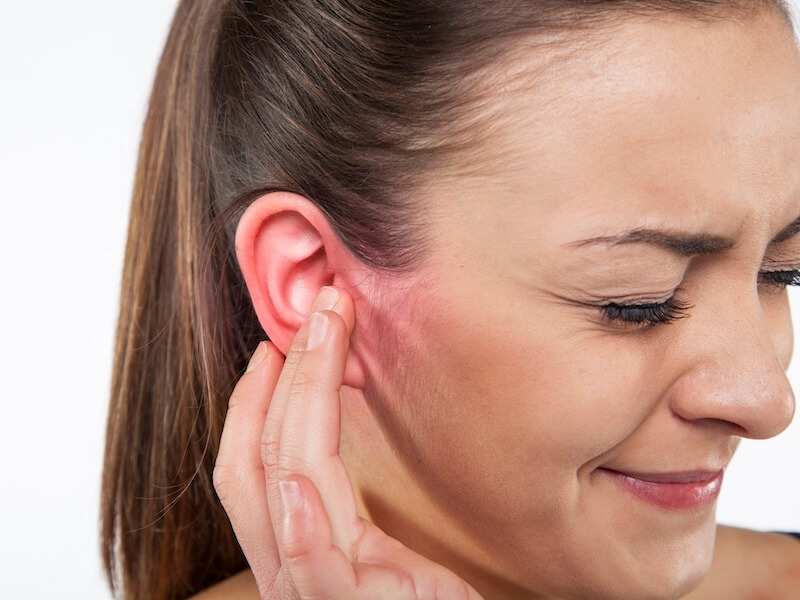
Surprisingly, about 20% of all ear infections happen to adults. The common idea is that ear infections are something that normally impact children. And it’s accurate that ear infections are more prevalent in children, but they also happen frequently in adults.
For adults with hearing impairments or hearing loss, ear infections can be particularly inconvenient, as they can interact with hearing aids in some unpleasant ways. Hearing aids can also harbor germs that could lead to an ear infection if they aren’t correctly cleaned and maintained.
So, you might be wondering: Can I wear hearing aids while I have an ear infection? You can, but it may not be something you want to do. Ear infections can cause substantial swelling and discomfort in the ear, and your hearing aids might worsen those symptoms. But individuals who use hearing aids can take a few steps to treat and possibly prevent ear infections.
Do hearing aids cause ear infections?
You might be wondering if your hearing aid is the cause of your ear infection if you’re an adult with hearing loss. Technically, the answer is no. But more detail is needed to understand the whole story.
Nearly all ear infections are caused by bacteria or a virus that gets into the ear. There are a number of paths that bacteria and viruses can take on their way to becoming an infection. In some instances, the inner ear becomes infected after a previous illness (for instance, a sinus infection or a cold). In other cases, fluid buildup may result in an infection. And it’s also definitely possible for viruses and bacteria to infect the inner ear via simple transmission.
This can occur with some frequency to individuals who use hearing aids. The virus or bacteria hitches a ride on your hearing aid and, upon insertion, gains access to the inner ear. That’s why it is crucial for those with hearing impairments to correctly maintain and clean their devices. In other words, the hearing aid itself does not cause the ear infection, the virus or bacteria does. But your device might play a role in transmission.
Contact between hearing aids and ear infections
So, how do ear infections and hearing aids interact? The best way to anticipate what to expect is to look at the most common ear infection symptoms. Generally speaking, ear infections will present with the following symptoms:
- Swelling and inflammation
- A feeling of fullness or pressure in the ears
- Vertigo or dizziness
- Tinnitus (a ringing in the ears)
- Pain in the ear
- Fluid draining from the ear
- Temporary loss of hearing in some cases
Not everyone will experience every symptom, of course. In most circumstances, your infected ear will be painful and there will most likely be obvious swelling around the inner ear. For individuals with hearing loss, these symptoms can interact unfavorably with your hearing aids. That’s because the hearing aid is inside the infected ear (at least some of it). Your hearing aids might cause added soreness as they aggravate the tender inflamed infected ear.
Additionally, any in-the-canal hearing aid can stop drainage. When fluids cannot drain, your discomfort may become prolonged. The pain and pressure in your ears will be increased as a result of this. This pressure can be even more pronounced when you’re wearing your hearing aid.
The performance of your hearing aid can also be impacted by the excess moisture. So your ears are in more pain and your hearing aid isn’t really working as well as it should. Which means that wearing hearing aids when you have an ear infection can be a downright miserable time.
Ear infection & hearing aid solutions
So what can you do if your hearing aids are annoying you while you have an ear infection? There are several steps you can take to reduce your risk of getting ear infections and to manage the discomfort that an ear infection might cause. Those steps include the following:
- Talk to your hearing specialist: Think about coming in to have your hearing aid re-fit if your ear infection goes away but your hearing aid is still not comfortable.
- Take breaks from wearing your hearing aids: You can take a break from your hearing aids for a while if you have severe or persistent pain. You can use alternative methods of communication with friends and family, like texting, in the meantime.
- Talk to your healthcare provider: If you suspect that you have an ear infection, speak with your doctor as soon as possible. The sooner you treat the ear infection, the less severe or prolonged your symptoms may be.
- Regularly clean your hearing aids: Keeping your device clean can reduce the risk of transmitting bacteria or viruses to your ears. If you don’t know how to clean and disinfect hearing aids, talk to us for a quick tutorial.
- Practice good ear hygiene: It’s essential to keep your ears clean and dry and regularly clean your outer ear. However, you should never stick any object in your ear and that includes cotton swabs. Using cotton swabs can push earwax and other debris further into your ear, increasing your chance of developing an infection. You’re trying to accomplish the exact opposite.
You probably depend heavily on your hearing aid every day. They help you get around your world more easily and have better communication with your friends and family. Which means that these little devices will usually be hard to give up, even for a short time. However, you will have a quicker recovery from your ear infection if you take a break from wearing them until you heal up. This will help you get back to feeling better sooner.
It’s not unusual for individuals to get ear infections. But that doesn’t mean you shouldn’t get treatment or try to prevent them. If you have questions about how ear infections might affect your hearing aid use, give us a call today.